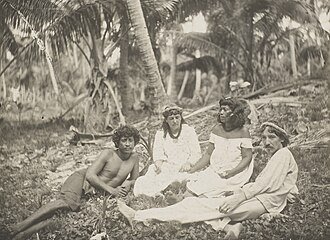The Origins of Horror
Frankenstein, Jekyll & Hyde, Dracula… these early barbarous tales form the basis for today’s horror genre. Frankenstein, in particular, is so much a part of the cultural zeitgeist that this monster – featured in a single novel – is as familiar as the vampires, ghosts, and witches that have their origins in folklore.
Today we are going to visit the online archives of the creators of some of our favorite monsters - Mary Shelley, Robert Louis Stevenson, and Edgar Allan Poe.
Mary Shelley
Mary Shelley, author of Frankenstein, or the Modern Prometheus, was destined to write. Her mother, Mary Wollstonecraft, was an early feminist and author of A Vindication on the Rights of Women. Her father, William Godwin, was a philosopher who authored books on philosophy as well as novels. And Mary married the now-renowned poet Percy Bysshe Shelley in a whirlwind romance that ended Percy’s first marriage.
Detail from Frontispiece to Mary Shelley, Frankenstein published by Colburn and Bentley, London 1831. Steel engraving by Theodor von Holst. Wikimedia Commons.
The family’s papers are all available together in the digital collection of the Shelley-Godwin Archive, a project that digitized manuscripts from the New York Public Library, the Maryland Institute for Technology in the Humanities, Oxford’s Bodleian Library, the Huntington Library, the British Library, the Houghton Library, and the Victoria and Albert Museum. The collection contains over 90% of available handwritten materials related to the family’s collected works. It does not include personal papers or correspondence.
Works in the digital collection can be viewed in two ways - by notebook or by book. For example, for Frankenstein, you can view pages from the first draft, second draft, or fair copy; or, for context, you can view pages of each notebook in which Shelley wrote or made notes for the book.
Edgar Allan Poe
Edgar Allan Poe provided the world the first fictional detective and some of the most recognizable horror stories ever written. Poe himself led a fairly horrific life. Orphaned, he was taken in by the Allan family who then cut ties with him when he was a young adult. He never quite distinguished himself in the literary scene, failed repeatedly to run his own publications (because he was an argumentative drunk), lost his beloved wife to tuberculosis, and died poor.
Daguerreotype of American writer Edgar Allan Poe. In Reserve Collection of American Antiquarian Society. Wikimedia Commons.
The Edgar Allan Poe collection at University of Texas’s Harry Ransom Center contains correspondence, manuscripts, newspaper clippings, art, songs, and more. Among the documents are notes Poe jotted on scraps of paper. One such (cataloged as “marginalia”) shows Poe’s sense of humor. Talking of having his work plagiarized by Henry Beck Hirst (only after Mr. Hirst accused him of the same), he complains not about the actual plagiarism, but about his words being used ungrammatically. The note ends with this:
“It is not that Mr. Hirst did this thing – but that he has went and done did it.”
Robert Louis Stevenson
Stevenson is perhaps best known for adventure tales like Treasure Island and Kidnapped, but he also penned one of the most famous horror tales of all time – Dr. Jekyll and Mr. Hyde. The novella, about a doctor who devises a serum that makes him transform into a ruthless murderer in thrall to his basest instincts, has inspired movies, plays, art, video games, and a Broadway musical.
From far left: Nan Tok, Fanny Stevenson, Natakanti, and Robert Louis Stevenson, Butaritari Island, Kiribati, c 1890. State Library of New South Wales. Wikimedia Commons.
The Robert Louis Stevenson Museum in St. Helena, California maintains a small digital collection that includes, among other things, family papers from his life in Samoa. The site’s online database allows both a keyword search and an advanced search, as well as browsing by photo, library (i.e., books in the Stevensons’ collection), archival materials, or objects.
All of these collections provide a window into the lives of some of history’s greatest authors and the times in which they lived.



